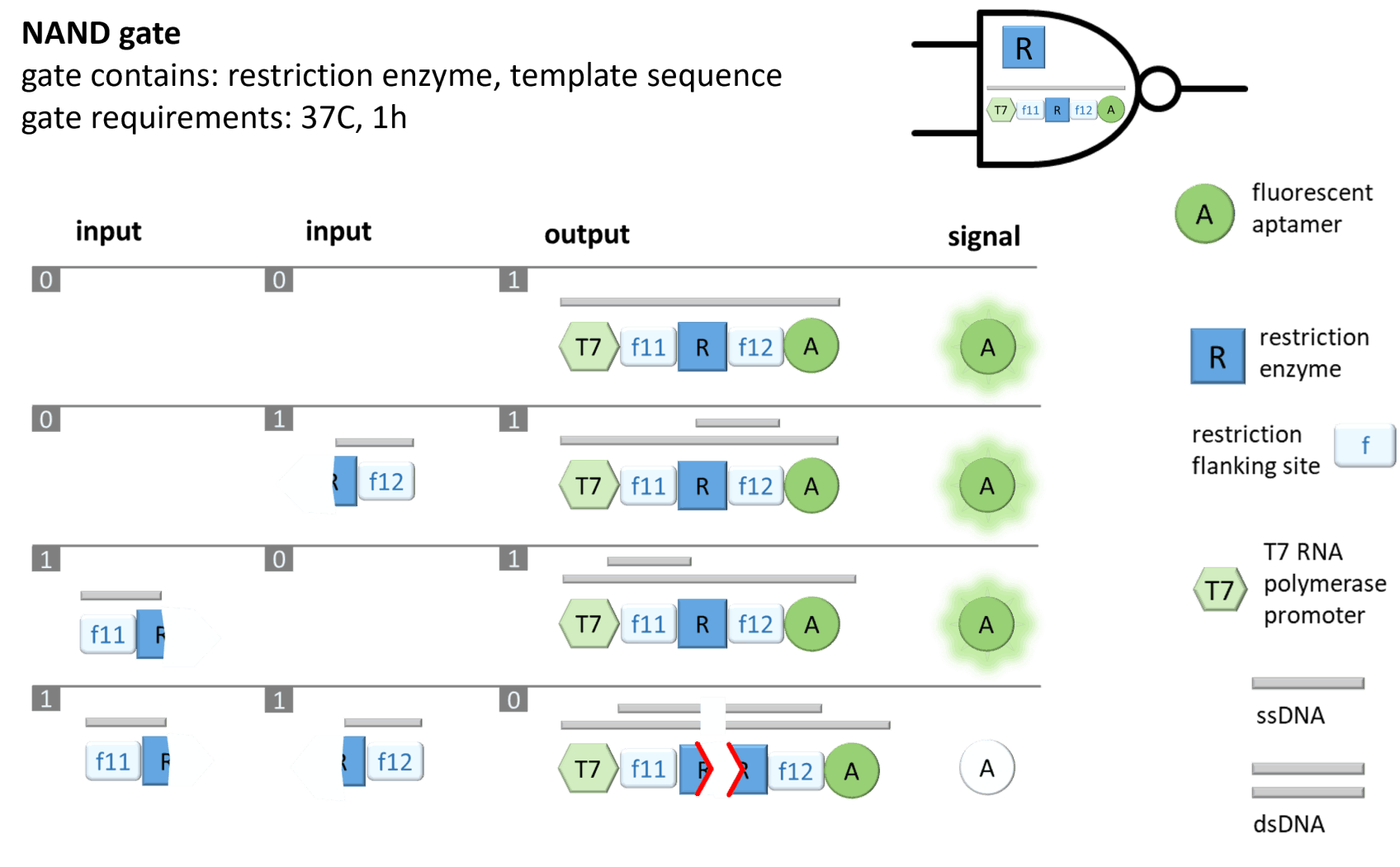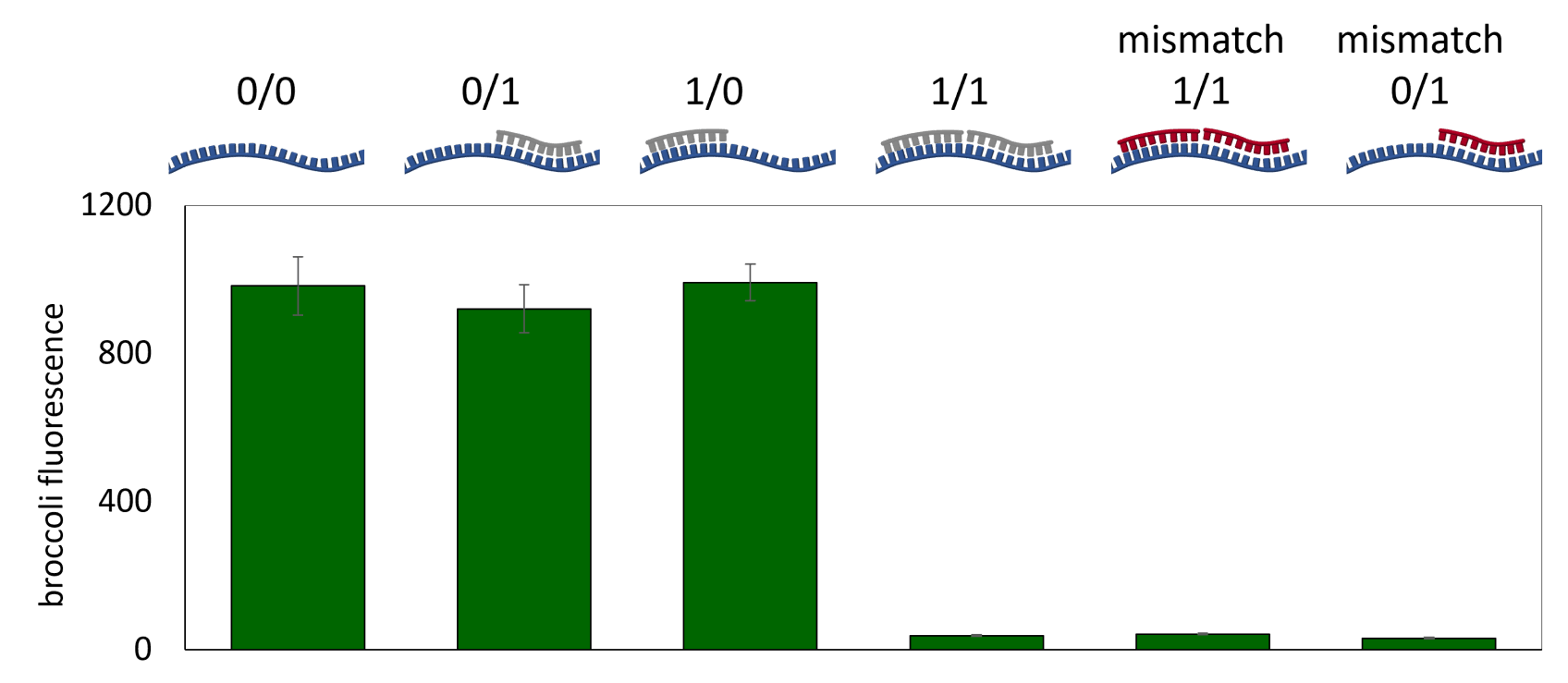
Biocomputing
TRUMPET is a biocomputing platform. Operation on Boolean logic gates are performed using protein enzymes operating on DNA templates.
The final readout of the state of the gate is done by transcribing the final template to RNA, with fluorescent RNA aptamer providing 0 (no fluorescence) or 1 (fluorescence detected) signal.





